|
WHAT’S NEW AT OUR LIBRARY (July 2011)!!! |
|
We have been the fortunate recipient of many book donations. |
| Children's and Young Adult Reading |
| |
|
 |
The Magic Dreidels: A Hanukkah Story – by Eric A. Kimmel
Kimmel transplants the folktale "The Tablecloth, the Donkey and the Stick" to an old-world shtetl, depicted by first-time illustrator Krenina in skewed planes of indigos and violets with a few nods to Chagall. The story involves a boy, a brass dreidel dropped down a well, a goblin who procures magic dreidels that spin out latkes and gelt, and a thieving neighbor. The internal logic, unfortunately, goes haywire. This is more like a sketch for a story than a fully evoked tale. Kimmel fans should stick with his Hanukkah title Asher and the Capmakers (1993). Ages 4-8. |
 |
Chanukah Lights Everywhere – by Michael J. Rosen
Rosen (Elijah's Angel) stresses multiculturalism in this bland venture. For example, on the seventh night of Hanukkah, the child narrator notices that the house of his best friend, who celebrates Christmas, is lit with lamps, "seven altogether"). The focus is so secular that the ending ("I think about... being Jewish in such a wide world of so many other lights") feels hollow. Iwai's (Night Shift Daddy) cheery acrylics contain an unannounced game: the numbers of cats per spread correspond to the successive nights. Ages 3-7. |
 |
Hanukkah: Festival of lights celebrate with songs, decorations, food, games, prayers and traditions – by Mary F. Rhinelander
|
 |
Lots of Latkes: A Hanukah Story – by Sandy Lanton
Kindergarten-Grade 3-Long ago in a faraway village, an old woman invites her friends to a Hanukkah dinner. Each guest plans to bring something to share-sour cream, applesauce, fish, and jelly doughnuts-but a series of mishaps results in each of them contributing latkes instead. The friends have a good time anyway, celebrating the holiday with a dreidel, songs, dancing-and lots of latkes. Cartoon illustrations in soft colors are appropriate for the lighthearted story. |
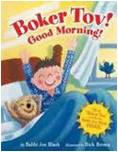 |
Boker Tov (CD) by Rabbi Joe Black
The term "Boker Tov" means "Good Morning" in Hebrew. Boker Tov is a lovely preschool story with an accompanied CD that is sung by Rabbi Joe Black on guitar. The story, written in rhyme is in easy readable print for emergent readers. This sweet story shows children from all ethnic backgrounds waking up and greeting the day with smiles on their faces. The author shows children with positive spirits, thanking God for food, the earth, the sunshine and the surprise of each new morning. The brightly colored illustrations, done in acrylic paint, depict children going to school and being with friends. While this is not an educational resource for teachers, it is rather a wonderful read-along story with a very catchy tune that is easy to hum along to. The story illustrates daily morning routines that preschoolers can easily relate to. The children come from all ethnic backgrounds doing all sorts of things like brushing their teeth, eating breakfast, getting dressed, and going to school. The theme of starting fresh each new day with a positive attitude really overshadows the theme of morning prayers in this story. |
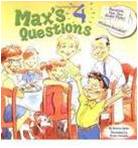 |
Max’s 4 Questions – by Bonnie Bader
Max is the youngest of four brothers and lives in a house with four dogs, four parakeets, and four goldfish—so all the grown-ups are usually too busy to answer his questions. That is, of course, until Passover comes along and he gets to ask the four questions. Little ones will delight in this sweet, funny story that teaches them all about Passover with this lovable main character. |
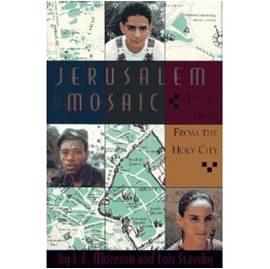 |
Jerusalem Mosaic – by I.E. Mozeson
Grade 6-Up Thirty-six Jewish, Moslem, and Christian teenagers living in Jerusalem speak their minds in this revealing collection of monologues extracted from interviews conducted in 1992 and 1993. All but a few of the young people seem committed to staying there?even with the great uncertainties of the near future. Most talk about the up-and-down relationships with family and friends to which American teens can easily relate, but the political strife of the Middle East (and especially the Arab-Israeli conflict) intrude on the thoughts of even the least politicized. The Intifada, the peace agreement between the PLO and Israel, the complexities and minutiae of Israeli and Palestinian politics, the secular v. religious conflicts in all three cultures, military service in Israel, the Gulf War, and the recent influx of Russian and Ethiopian immigrants into Israel permeate almost all of the their reflections on their lives. And the resulting mosaic provides YAs with insight into a society that is widely misunderstood in America. |
 |
Albert Einstein – by Ibi Lepscky
This attractively illustrated book for boys and girls tells a true story about a very unusual child, later recognized by the world as a man of scientific genius. But before everything else, he was like every child. He loved to play, and to use his imagination. Today's children will delight in this story, while also learning about a boy who grew up and revolutionized modern science. |
 |
Jodi’s Hanukah Dig – by Anna Levine
Jodie, who dreams of becoming a famous archaeologist, begs her father to take her on a dig. Dad finally relents, allowing her to accompany him on a visit to Professor Hoffer’s site at Modi’in, Israel, home of the ancient Maccabees, a Jewish group whose story is remembered each year during Hanukkah. Later, when a small cave is exposed, Jodie (who is small enough to fit into a bucket) is lowered into the cavern and allowed to share her observations with the professional crew. Levine, author of the middle-grade novel Running on Eggs (1999), writes knowledgeably about the details of archaeological work, including the thrill of discovery, the backbreaking work of digging in the hot sun, and its importance to the historical record. Topaz’s impressionistic artwork will give readers a good sense of the Israeli countryside and the activities at a dig. A good choice for classes studying history or countries. |
 |
In Our Image – by Nancy Sohn Swartz
PreSchool-Grade 3-A nondenominational, nonsectarian retelling of the creation story that focuses on the period before man and woman were created. The animals tell God the gifts they would like to present to humankind. "The chimpanzee chattered, 'Let them always be curious.' The ostrich bent low. 'Let them mind their own business.'" After being told that humans will have dominion over them, the animals are frightened but God reassures them that people will care for the world and its inhabitants. There is no gender hierarchy; God is not referred to as either male or female, and both man and woman are created simultaneously. The vibrantly colored illustrations nearly leap off the page in this delightful interpretation. |
 |
The Man Who Flies With Birds – by Carole Garbuny Vogel
Grade 4–8—At age 25, as a young biologist with the Society for the Protection of Nature in Israel, Leshem knew that he wanted to become a raptor expert. When he earned his Ph.D. in ornithology, he decided to study the dangers that the 35 species of raptors that travel through Israel encounter during migration. He approached the Israeli Air Force, promising that, with sufficient funding, he could map the migration routes of large birds and provide up-to-the minute reports of where they were flying, thereby eliminating some of the thousands of bird strikes suffered by Air Force planes—some of them worth as much as five million dollars. The study of birds' migration; their detection of the Earth's magnetic fields; their use of thermals to save energy; and the physics of flying involved hundreds of people in 17 countries and a network of observation stations, radar, and aircraft. The information helped the Israeli Air Force to drastically lower the number of bird strikes, saving lives and aircraft. Leshem's fascinating life, his undaunted determination to spread awareness of birds and wildlife protection, and his amazing accomplishments are a clear indication that anything is possible. The book is heavily illustrated with good-quality color photos, maps, and diagrams, many of them captioned with incredible facts about wildlife and migration. |
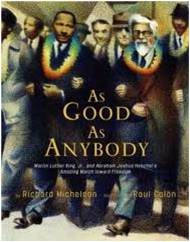 |
As Good as Anybody – by Richard Michelson
Grade 2–5—An eloquent tribute to two great men and their surprising alliance. Michelson explores the kinship between the African-American Baptist minister and a Polish-born rabbi who fled Nazi Germany to teach in America. Both men were raised by wise, loving parents and followed in their fathers' footsteps. Both of them also experienced hatred and prejudice close to home. Whether the signs said "Whites Only" or "No Jews Allowed," they were equally hurtful and inspired them to strive for peace and equal rights for all. The first half of the book offers a simple, concise, and beautifully written early biography of King; the latter describes Heschel's youth. His father instructed him to "Walk like a prince, not a peasant….You are as good as anybody," echoing the words of King's mother. He answered Dr. King's call and joined the 1965 March to Montgomery with 25,000 others. Colón's signature soft, colored pencil and watercolor illustrations capture the anger and passion of the times. This exemplary introduction to the Civil Rights Movement will appeal to a wide audience. Its message will inspire and unite readers from many backgrounds. |
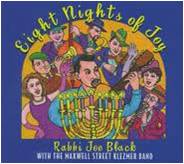 |
Eight Nights of Joy (CD) – with Rabbi Joe Black |
| |
Hanukkah: A counting book in English, Hebrew and Yiddish - by Emily Sper
The story of Chanukah for children – by Beverly Rae Charette
It’s Hanukah – by Santiago Cohen
Eight Chanukah lights – by Annie Auerbach
|
| |
|
| ADULT BOOKS |
 |
When Light Pierced the Darkness – Nechama Tec
Saved by Christian Poles herself from almost certain death, Tec closely and dispassionately examines the phenomenon of the "righteous Christians," those individuals who, for whatever reason, risked their own lives to save the lives of Jews. She focuses exclusively on Poland, a country totally dominated by the Nazis and simultaneously burdened with its own long history of anti-Semitism. Tec interviewed numerous Jewish survivors and Polish rescuers. By supplementing these data with other published and unpublished sources, she offers valuable new insights into why certain individuals rose to the heights of human altruism in a milieu marked by human cruelty and barbarism. Her sociological approach is useful and remarkably unobtrusive. |
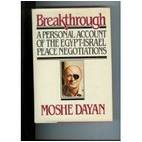 |
Breakthrough by Moshe Dayan
Moshe Dayan's detailed account of the Egyptian-Israeli peace odyssey from Morocco to Camp David and the White House. Dayan's role as Foreign Minister was to safeguard Israel's rights and to devise practical formulas for the first peace treaty between his country and an Arab state. From this vantage point, there is more emphasis on procedural circumambulation and less on personal matters. Dayan focuses especially on the Americans involved - on Cyrus Vance, who tried to narrow the gaps, and Brzezinski, who tried to widen them ("as though he was trying to break us"); and on Jimmy Carter. |
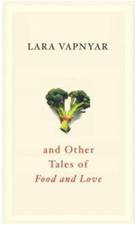 |
Broccoli and other tales of food and love – Lara Vapnyar
Vapnyar’s collection of short stories links food to lonely, loveless dating among recent Russian immigrants over six tales. She ends the collection with a blog-voiced roundup of recipes that's incongruent with the delicate stories, but her take on the poignant oddities of New York Russian émigré life is universally palatable. Jewish tales and legends – M.G. Glenn |
 |
Choosing Judaism – Lydia Kukoff
Choosing Judaism has become a classic guide for individuals considering conversion. By sharing her own story, Lydia Kukoff has created a truly remarkable work about what it means to make this significant choice. Kukoff gives the reader a fresh perspective on the issues that face converts every day: dealing with your non-Jewish and Jewish family, creating your own Jewish community, and looking toward the future in your new Jewish faith. Years after her own conversion, she continues to question, grow, and learn, and encourages others to do the same. |
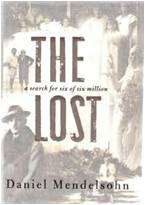 |
The Lost: A Search for 6 of 6 Million – Daniel Mendelsohn
Daniel Mendelsohn's The Lost is the deeply personal account of a search for one family among his larger family, the one barely spoken of, only to say they were "killed by the Nazis." Mendelsohn, even as a boy, was always the one interested in his family's history, but when he came upon a set of letters from his great uncle Schmiel, pleading for help from his American relatives as the Nazi grip on the lives of Jews in their Polish town became tighter and tighter, he set out to find what had happened to that lost family. The result is both memoir and history, an ambitious and gorgeously meditative detective story that takes him across the globe in search of the lost threads of these few almost forgotten lives. |
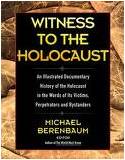 |
Witness to the Holocaust: An oral history – Ed. by Rhoda G. Lewin
From the first boycott of Jewish businesses in Germany in 1933 to testimony at the Nuremberg Trials in 1946, this illustrated volume includes survivor testimonies, letters, government documents, newspaper reports, diary entries and other firsthand materials, as well as Holocaust scholar Michael Berenbaum's insightful commentary putting the materials into context. The book's chronologically organized documentary approach provides a unique perspective on this much-published subject, and drawing on the most current research in the field of Holocaust studies, offers readers an unforgettable and engrossing history of the Nazis' largely successful effort to eradicate the Jews and other "undesirables" of Europe. |
 |
The mascot: Unraveling the Mystery of My Jewish Father’s Nazi Boyhood - by Mark Kurzem
When a Nazi death squad massacred his mother and fellow villagers, five-year-old Alex Kurzem escaped, hiding in the freezing Russian forest until he was picked up by a group of Latvian SS soldiers. Alex was able to hide his Jewish identity and win over the soldiers, becoming their mascot and an honorary “corporal” in the SS with his own uniform. But what began as a desperate bid for survival became a performance that delighted the highest ranks of the Nazi elite. And so a young Jewish boy ended up starring in a Nazi propaganda film. |
 |
The Warsaw diary of Chaim J. Kaplan – Ed. By Abraham I. Katsh
Warsaw resident Chaim Kaplan's journal begins on September 1, 1939, the day the Nazi blitzkrieg stunned the world -- the Jews of Poland most of all. It ends in August 1942, when Kaplan realized that the Nazi noose was around his neck. Today Kaplan's diary stands as an extraordinary record of the Nazi destruction of Warsaw's Jewish community. It is as timely as ever. |
 |
Becoming a Jew – by Maurice Lamm
The path for Judaism starts somewhere. Maybe a jewish friend that take us to temple, maybe we're dating a jewish girl/guy or just curiosity... and we want to know more. What is judaism about? Is conversion possible? Is other people going through the same process?. Maybe is too soon to go to a Rabbi to talk about this, or we are just too shy. These and other questions are answered in this book. Personal experiences, holidays, jewish belief, traditon, etc. |
 |
Arrogant beggar – Anzia Yezierska
This realistic, socially conscious, occasionally overly romantic novel by Yezierska (1880-1970) chronicles the adventures of narrator Adele Lindner, who exposes the hypocrisy of the charitably run Hellman Home for Working Girls (read the Clara de Hirsch Home) after fleeing from the poverty of the Lower East Side. In the seemingly picture-perfect institution, Adele's eyes are opened. She wants to be seen as an equal, but her benefactress instead sees her as a servant girl, someone whose role, she is told later, "consists in serving others." Later, after leaving the home and founding a restaurant, Adele is able to practice philanthropy the way she feels it should be practiced. On its publication in 1927, this book was criticized for its sarcastic attacks on boarding institutions. Though dated and sometimes melodramatic, particularly where Adele's romance with her benefactress's son is concerned, the social commentary about Jewish class and ethnic tensions still rings true. Fast-paced, the book brings to life the teeming activity of the Lower East Side with both passion and careful attention to detail. |
 |
97 Orchard: an Edible History of 5 Immigrant Families in one New York Tenement – by Jane Ziegelman
In this compelling foray into forensic gastronomy, Ziegelman pulls the facade off the titular 97 Orchard Street tenement.The result is a living dollhouse that invites us to gaze in from the sidewalk.With minds open and mouths agape, we witness the comings and goings of the building's inhabitants in the years surrounding the turn of the twentieth century. By focusing on the culinary lives of individuals from a variety of ethnic groups, Ziegelman pieces together a thorough sketch of Manhattan's Lower East Side at a time when these immigrants were at the forefront of a rapidly changing urban life. The food facts she uncovers are sure to interest and astound even those outside the culinary community, and guarantee that the reader will never look at a kosher dill pickle, a wrapped hard candy, or even the delectable foie gras the same way again. Ziegelman cleverly takes this opportunity to show us that in learning about food, we're actually learning about history—and when it comes to the sometimes surprising journey some of our favorite meals have taken to get here, it's fascinating stuff. |
 |
The Year of Living Biblically – A.J. Jacobs
Jacobs, a New York Jewish agnostic, decides to follow the laws and rules of the Bible, beginning with the Old Testament, for one year. (He actually adds some bonus days and makes it a 381-day year.) He starts by growing a beard and we are with him through every itchy moment. Jacobs is borderline OCD, at least as he describes himself; obsessing over possible dangers to his son, germs, literal interpretation of Bible verses, etc. He enlists the aid of counselors along the way; Jewish rabbis, Christians of every stripe, friends and neighbors.
In an open-minded way he also visits with atheists, Evangelicals Concerned (a gay group), Jerry Falwell, snake handlers, Red Letter Christians--those who adhere to the red letters in the Bible, those words spoken by Jesus Himself, and even takes a trip to Israel and meets Samaritans. Through it all, he keeps a healthy skepticism, but continues to pray and is open to the flowering of real faith. Jacobs is a knowledge junky, to be sure. He enjoys the lore he picks up along the way as much as any other aspect of his experiment. One of the ongoing schticks is his meeting with the shatnez tester, Mr. Berkowitz. He is the one who determines whether or not your clothes are made of mixed fibers, in keeping with the Biblical injunction not to wear wool and linen together. The two become friends and prayer partners, in only one of the unexpected results of this year. |
 |
The Last Jew – by Noah Gordon
During the Spanish Inquisition, a Jew had only two choices: flee the country or convert to Catholicism. The Toledano family decides to flee, but before they can leave, their home is burned by a mob, and only 16-year-old Yonah is left in Toledo. Persuaded that his father's death and that of his older brother three years earlier were caused by the same man, the teen flees on the family's burro and begins the life of a wanderer, a fugitive who changes his name and pretends to be converted. He works as a shepherd in the hills, as a deckhand on ships trading along the Spanish coast, and finally as an apprentice to a physician in Saragossa. After the death of his mentor, Yonah takes over the practice and becomes well-known and respected. On a trip north, he stumbles on a remote and beautiful valley settled by conversos like himself. There he falls in love with a young widow and the two return to Saragossa and make a life together, ostensibly Christians, but secretly Jews. Finally confronting the cleric responsible for the murder of his father and brother, the wandering Jew finds peace at last. This exciting tale of 16th-century Spain has a mystery involving a stolen reliquary, a sinister Inquisitor, and a host of colorful characters. Most of all, though, it is the story of a resourceful and courageous young man determined to remain faithful to his religion. |
 |
The Yiddish Policeman’s Union – by Michael Chabon
They are the "frozen Chosen," two million people living, dying and kvetching in Sitka, Alaska, the temporary homeland established for displaced World War II Jews in Chabon's ambitious and entertaining new novel. It is—deep breath now—a murder-mystery speculative-history Jewish-identity noir chess thriller, so perhaps it's no surprise that, in the back half of the book, the moving parts become unwieldy; Chabon is juggling narrative chainsaws here.The novel begins—the same way that Philip Roth launched The Plot Against America—with a fascinating historical footnote: what if, as Franklin Roosevelt proposed on the eve of World War II, a temporary Jewish settlement had been established on the Alaska panhandle? Roosevelt's plan went nowhere, but Chabon runs the idea into the present, back-loading his tale with a haunting history. Israel failed to get a foothold in the Middle East, and since the Sitka solution was only temporary, Alaskan Jews are about to lose their cold homeland. The book's timeless refrain: "It's a strange time to be a Jew."Into this world arrives Chabon's Chandler-ready hero, Meyer Landsman, a drunken rogue cop who wakes in a flophouse to find that one of his neighbors has been murdered. With his half-Tlingit, half-Jewish partner and his sexy-tough boss, who happens also to be his ex-wife, Landsman investigates a fascinating underworld of Orthodox black-hat gangs and crime-lord rabbis. |
 |
The Zookeeper’s Wife – Diane Ackerman
Ackerman tells the remarkable WWII story of Jan Zabinski, the director of the Warsaw Zoo, and his wife, Antonina, who, with courage and coolheaded ingenuity, sheltered 300 Jews as well as Polish resisters in their villa and in animal cages and sheds. Using Antonina's diaries, other contemporary sources and her own research in Poland, Ackerman takes us into the Warsaw ghetto and the 1943 Jewish uprising and also describes the Poles' revolt against the Nazi occupiers in 1944. She introduces us to such varied figures as Lutz Heck, the duplicitous head of the Berlin zoo; Rabbi Kalonymus Kalman Shapira, spiritual head of the ghetto; and the leaders of Zegota, the Polish organization that rescued Jews. Ackerman reveals other rescuers, like Dr. Mada Walter, who helped many Jews pass, giving lessons on how to appear Aryan and not attract notice. Ackerman's writing is viscerally evocative, as in her description of the effects of the German bombing of the zoo area: ...the sky broke open and whistling fire hurtled down, cages exploded, moats rained upward, iron bars squealed as they wrenched apart. This suspenseful beautifully crafted story deserves a wide readership. |
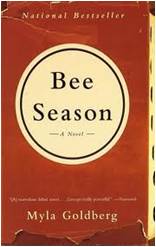 |
Bee season – by Myla Goldberg
An eccentric family falls apart at the seams in an absorbing debut that finds congruencies between the elementary school spelling-bee circuit, Jewish mysticism, Eastern religious cults and compulsive behavior. Nine-year-old Eliza Naumann feels like the dullest resident of a house full of intellectuals--her older brother, Aaron, is an overachiever; her mother, Miriam, is a lawyer; and her father, Saul, is a self-taught scholar and a cantor at the community synagogue. She surprises herself and the rest of the Naumanns when she discovers a rare aptitude for spelling, winning her school and district bees with a surreal surge of mystical insight, in which letters seem to take on a life of their own. Saul shifts his focus from Aaron to Eliza, devoting his afternoons to their practice sessions, while neglected Aaron joins the Hare Krishnas. Seduced by his own inner longings, Saul sees in Eliza the potential to fulfill the teachings of the Kabbalah scholar Abulafia, who taught that enlightenment could be reached through strategic alignments of letters and words. Eliza takes to this new discipline with a desperate, single-minded focus. At the same time, her brilliant but removed mother succumbs to a longtime secret vice and begins a descent into madness. Goldberg's insights into religious devotion, guilt, love, obsessive personalities and family dynamics ring true, and her use of spelling-as-metaphor makes a clever trope in a novel populated by literate scholars and voracious readers. Her quiet wit, balanced by an empathetic understanding of human foibles, animates every page. |
 |
Crash Course in Jewish History – by Ken Spero
From Abraham and the birth of monotheism to the Holocaust and the creation of modern Israel -- the epic sweep of the Jewish people s progress through time violates all the laws of human history. For centuries some of the greatest minds have come to appreciate the profound impact that this tiny nation has had on humanity and have tried to unlock the great mystery that the Jewish story presents, asking: How did this people survive against all the odds?
In one volume, A Crash Course in Jewish History explores the 3,800 years of Jewish existence while answering the great questions: Why have the Jewish people been so unique, so impactful, yet so hated and so relentlessly persecuted?
A Crash Course in Jewish History is not only comprehensive and readable; it is also entertaining and enlightening. Historian and author Ken Spiro takes the reader on a fascinating and informative journey through time, highlighting not only the key lessons of Jewish and world history, but, most importantly, on the profound relevance that the past holds for the future of both the Jewish people and humanity. |
 |
Lipshitz Six, or Two Angry Blondes – by T. Cooper
The story begins in 1907, when Esther and Hersh Lipshitz inexplicably lose their blond boy, Reuven, while disembarking at Ellis Island. They are fleeing the pogroms of czarist Russia and are headed for Amarillo, Tex., where Esther's brother Avi lives. An indifferent mother, Esther gradually comes to believe that Reuven is, somehow, Charles Lindbergh. The last third of the novel jumps from Esther's death to a gender-bending, self-reflexive coda. A male narrator and stalled novelist named T Cooper is working in New York as an Eminem-enamored DJ for bar mitzvah parties when his parents die in a bizarre car accident. T's reluctant return to Amarillo to oversee the funeral and the estate rekindles his interest in writing about his grandmother Miriam (Esther's daughter). Cooper the author bridges the obvious chasm between the atmosphere of Esther's story and the attitude of the coda by reaching out to a larger history. She takes apart the usual Jewish heritage tale and the themes of assimilation, touching them with both postmodern parody and Chagallesque folk magic. |
 |
When Shlemiel Went to Warsaw – by Isaac Bashevis Singer
Eight stories, some inspired by traditional Jewish tales, feature such characters as Shlemiel, Todie, Rabbi Leib and Menaseh. PW called this "a rich collection that will be enjoyed by both young and old." |
 |
Day After Night – by Anita Diamant
Day After Night is based on the extraordinary true story of the October 1945 rescue of more than two hundred prisoners from the Atlit internment camp, a prison for "illegal" immigrants run by the British military near the Mediterranean coast south of Haifa. The story is told through the eyes of four young women at the camp with profoundly different stories. All of them survived the Holocaust: Shayndel, a Polish Zionist; Leonie, a Parisian beauty; Tedi, a hidden Dutch Jew; and Zorah, a concentration camp survivor. Haunted by unspeakable memories and losses, afraid to begin to hope, Shayndel, Leonie, Tedi, and Zorah find salvation in the bonds of friendship and shared experience even as they confront the challenge of re-creating themselves in a strange new country.
This is an unforgettable story of tragedy and redemption, a novel that reimagines a moment in history with such stunning eloquence that we are haunted and moved by every devastating detail. Day After Night is a triumphant work of fiction. |
 |
Drawing in the Dust – by Zoe Klein
Insight into the world of biblical excavation in Israel raises Rabbi Klein's debut novel from a Jewish Da Vinci Code to an emotionally rich story of personal and historical discovery. After a dozen years digging in Megiddo, American archeologist Page Brookstone longs for something new. When an Arab couple propose that Page investigate the haunted ruins under their home, she ignores colleagues' misgivings and heads to Anatot, just outside Jerusalem. There, the couple, along with Page and her team, uncover murals, artifacts and remains suggesting they have come upon the grave of the prophet Jeremiah, buried with the woman he loved, Anatiya, who also has left a manuscript that parallels the Book of Jeremiah. The discovery ignites an international uproar and violent attacks while Page, affected by the ancient spirits, is attracted to Orthodox Israeli Mortichai Master, despite his connections to an organization opposing her efforts. Rabbi Klein's most vivid passages depict the meditative tedium of digging, the exultation of discovery and the intricate processes of authentication and preservation, while love stories past and present—and a balanced, compassionate view of both Israeli and Arab traditions—add to the book's pleasures |
 |
Yiddishe Mama; the Truth About the Jewish Mother - by Marnie Winston-Macauley
Is there such a thing as a Jewish mother? And if so, who is she? For the first time, best-selling Jewish author and humorist Marnie Winston-Macauley examines all aspects of the Jewish mother. Chronicling biblical Jewish mothers to modern-day Yentls, she creates a compendium using celebrity interviews, anecdotes, humor, and scholarly sources to answer these questions with truth and humor. |
 |
The Boy Who Loved Anne Frank: A novel – Ellen Feldman
Peter Van Pels hid in the attic with Anne Frank and died in the camps just before liberation. But what if he survived, forged a new identity, and came to the U.S. after the war? Feldman imagines the young immigrant, who denies his Jewishness and his horrific past, marries, raises a happy family, and succeeds in business. He reveals his identity to no one, including his Jewish wife, and he never speaks of the Holocaust cruelty he witnessed. But when the Diary, edited by Otto Frank, is an international bestseller, followed by the play and the movie, Peter can no longer suppress his survivor guilt, his fury at the exploitation and cover-ups, and his traumatic breakdown. The fiction is sometimes far-fetched, especially the perfect wife (even if it is the '50s). But the history will grab the many devoted readers of the Diary, as will Peter's rage at the falsely uplifting message that "people are really good at heart." |
 |
The Innkeeper’s Daughter – Barbara Cohen |
| |
Noah’s Ark – VHS video
Walk with song though Israel – VHS video
The Jew story – by Stella Suberman
Pesach for the rest of us – by Marge Piercy
|
| |
|
|
|




































